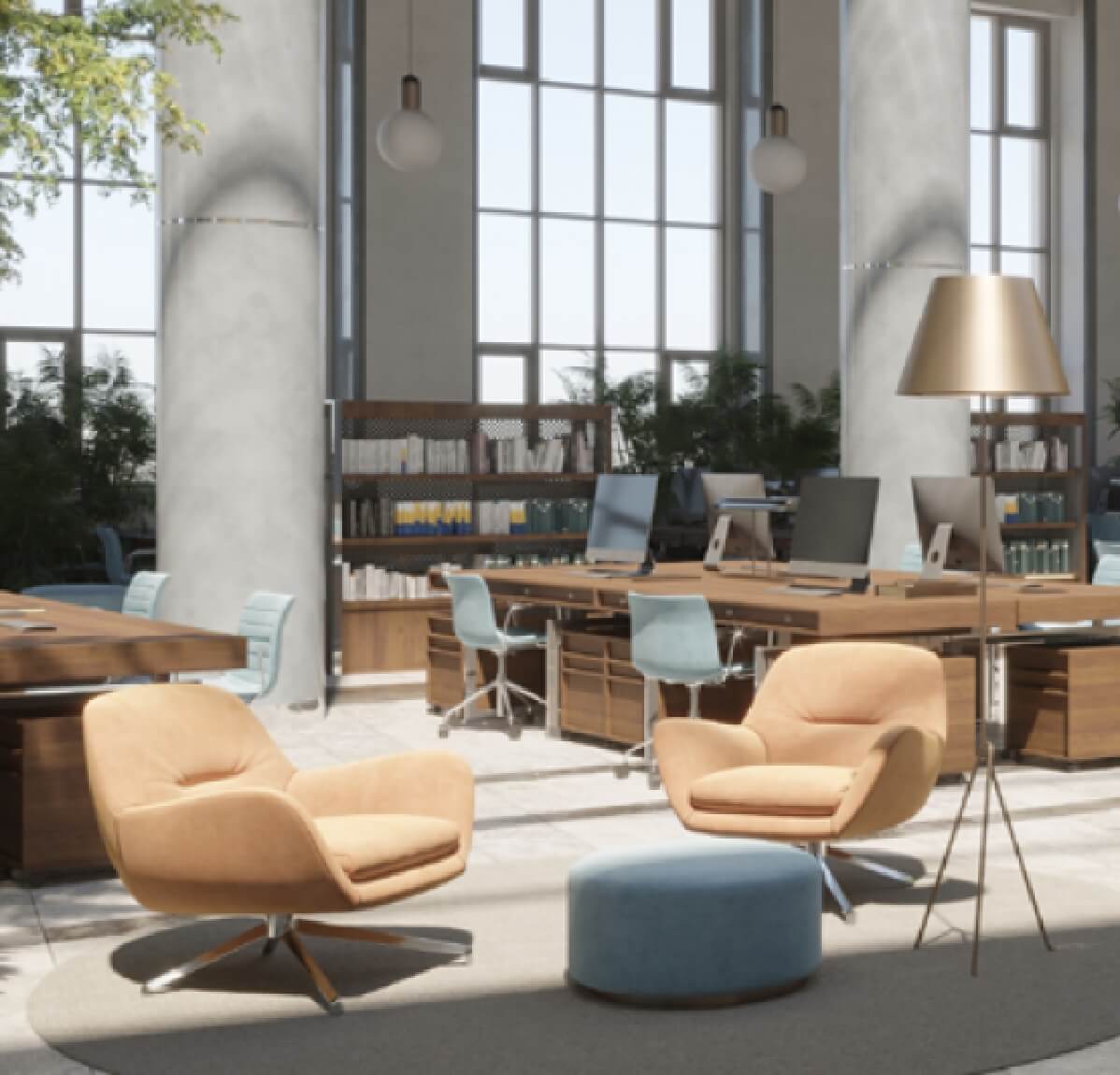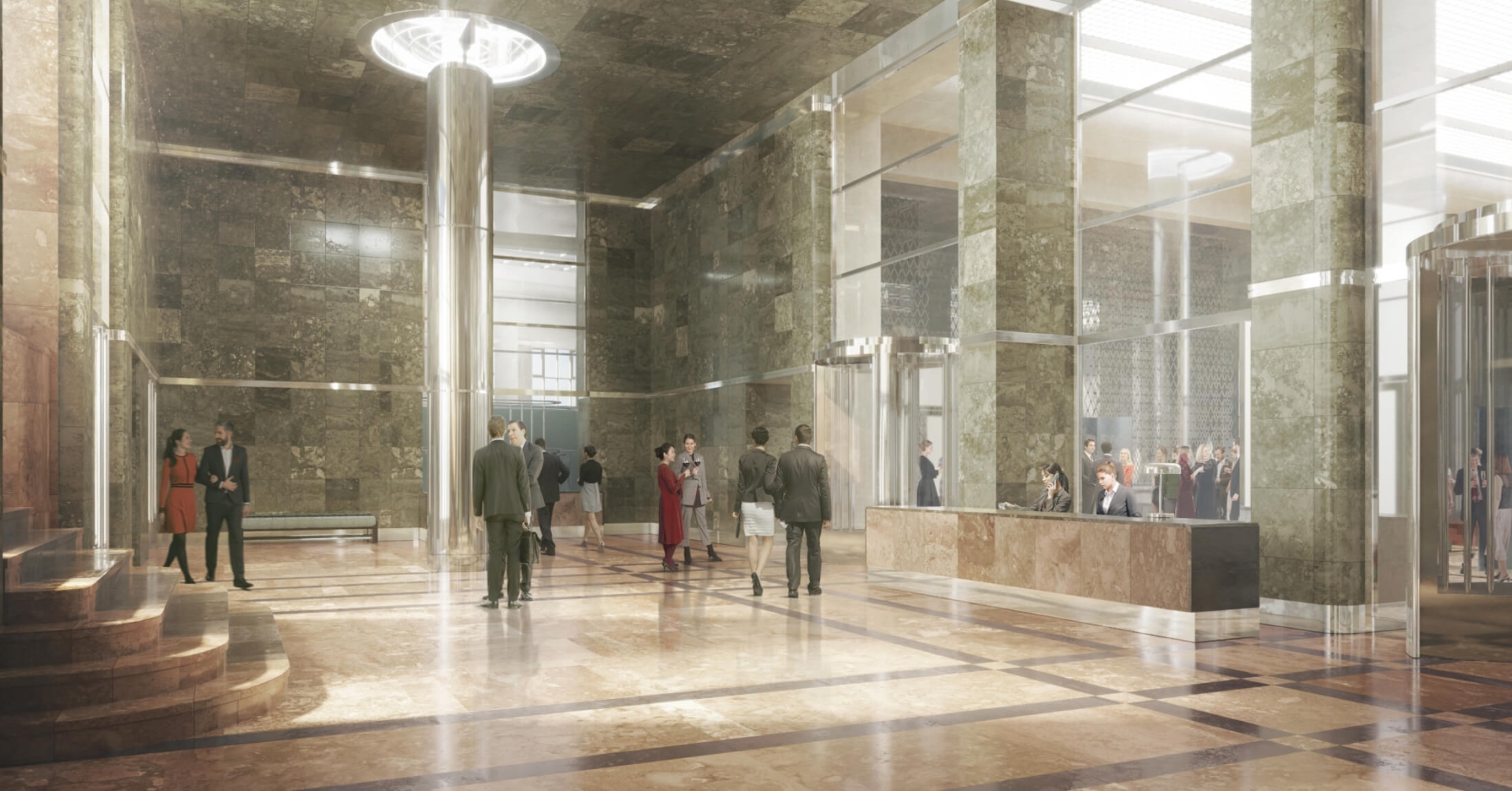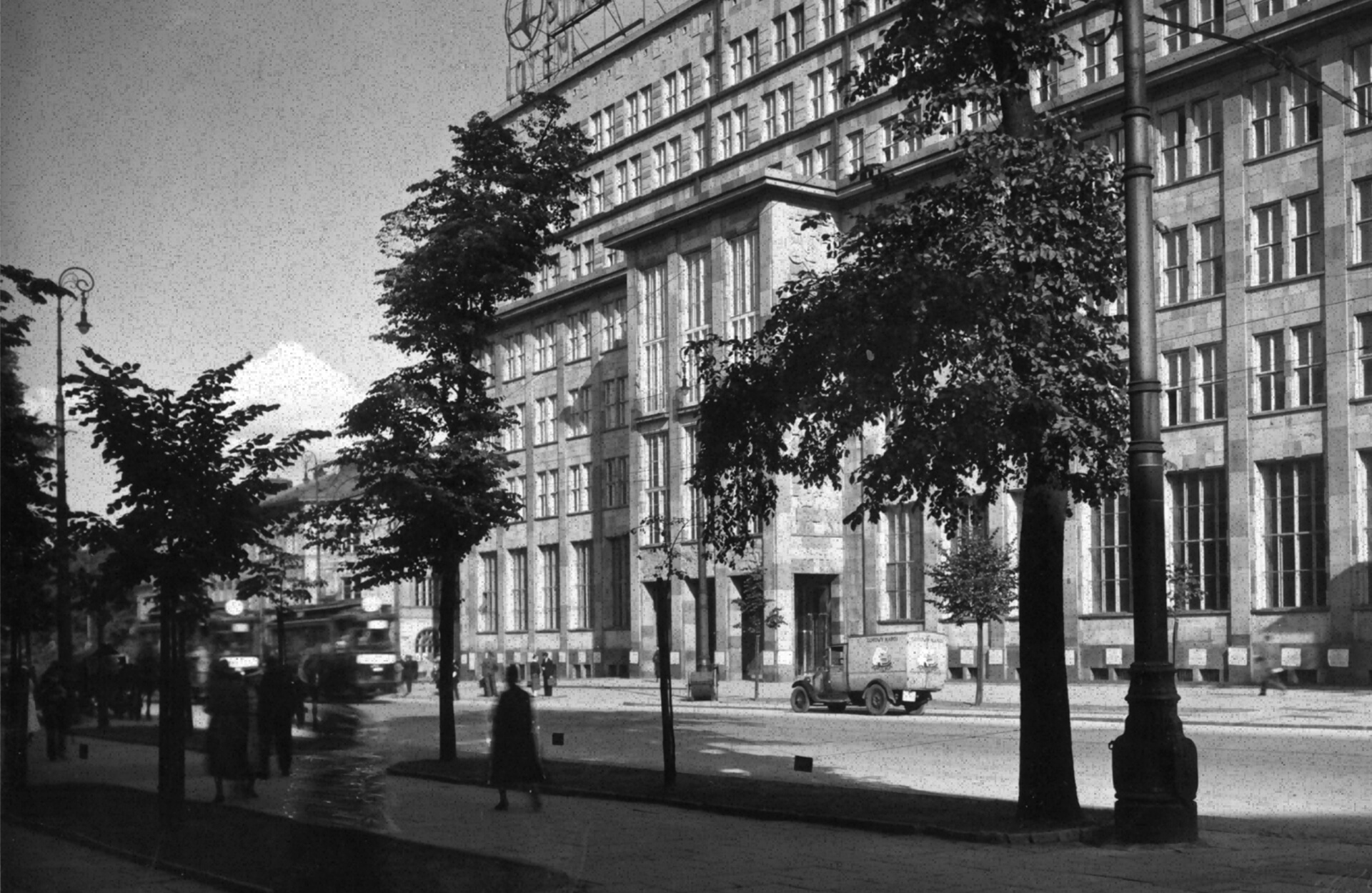
Architecture
Raw and serene – The BGK headquarters
There could hardly be a more prestigious location in Warsaw than the intersection of Jerozolimskie Avenue and Nowy Świat. This was also the case before the war. That is why this was the place, in 1931, where the representative headquarters of Bank Gospodarstwa Krajowego (BGK) was established – a state-owned bank whose capitals in the Second Polish Commonwealth exceeded all private banks put together. For more than 90 years, the BGK building has – uninterruptedly – dominated the neighbourhood.
Its designer, Professor Rudolf Świerczyński, decided to make the BGK building the dominant feature of Warsaw’s most elegant street.
Nowy Świat (New World) is not just a street name. In the inter-war period, models of modernity as well as symbols of success flowed from the New World, i.e. from the United States. It was from there that the legendary architect Le Corbusier took his inspiration, designing the first buildings in the spirit of modernism. In his mind, the charm and beauty of architecture should be rooted in the function it fulfils. In his book entitled. “In his 1923 book Towards Architecture, he included, among other things, a Canadian grain elevator as a model for architects of the new era. These types of structures were intended to inspire architects and show how their strength comes from expediency and simplicity, manifesting itself as a “thoughtful, magnificent play of solids in light”. In keeping with the ideas of the father of modernism, this was also Świerczyński’s direct inspiration when working on the design of the BGK building.
The second inspiration from the ‘New World’, specifically New York, can be seen in the stepped composition of the bank’s upper floors. In 1916, the so-called zoning law was introduced in the Big Apple. According to its provisions, a protective zone was set around Manhattan’s parcels of land, which determined the maximum size of buildings. A straight, vertical wall could only go up to a certain height, above which the façade had to ” retreat” into the building. All this so that light could reach the street.
The innovative law was the founding act of the modern city and was the expression of a new approach to urban planning. It was assumed at the time that the urban fabric could not develop without attention to good neighbourliness. The city was to be a space in which one lived comfortably and whose development was to take into account the surrounding area.
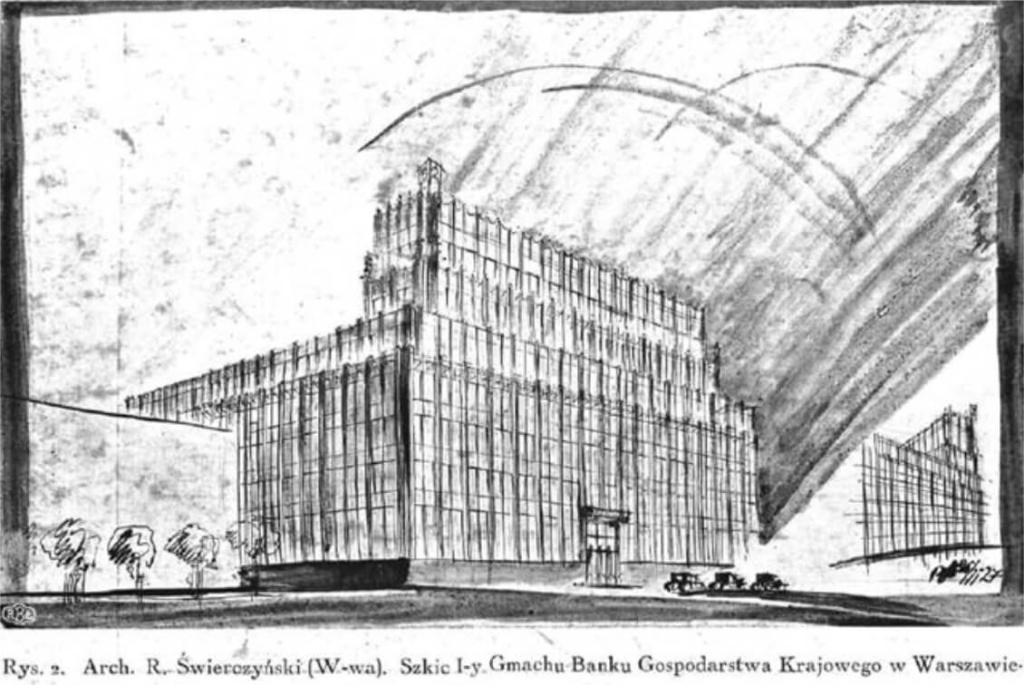

Construction commenced on 21 May 1928. If we take into account the causes of the delay that were beyond the control of the Bank and the management, such as the failure to vacate part of the site in time, as well as other causes (…) – the pace of construction was, by all accounts, reasonable. Within half a quarter of a year (3.5 years – author’s note) the construction and furnishing of the edifice was fully completed. As of 6 December 1931, the building of the Central B. G. K. was fully operational, including the internal fittings.
This is how the construction of the BGK building was described by the monthly magazine Architektura i Budownictwo in 1932.
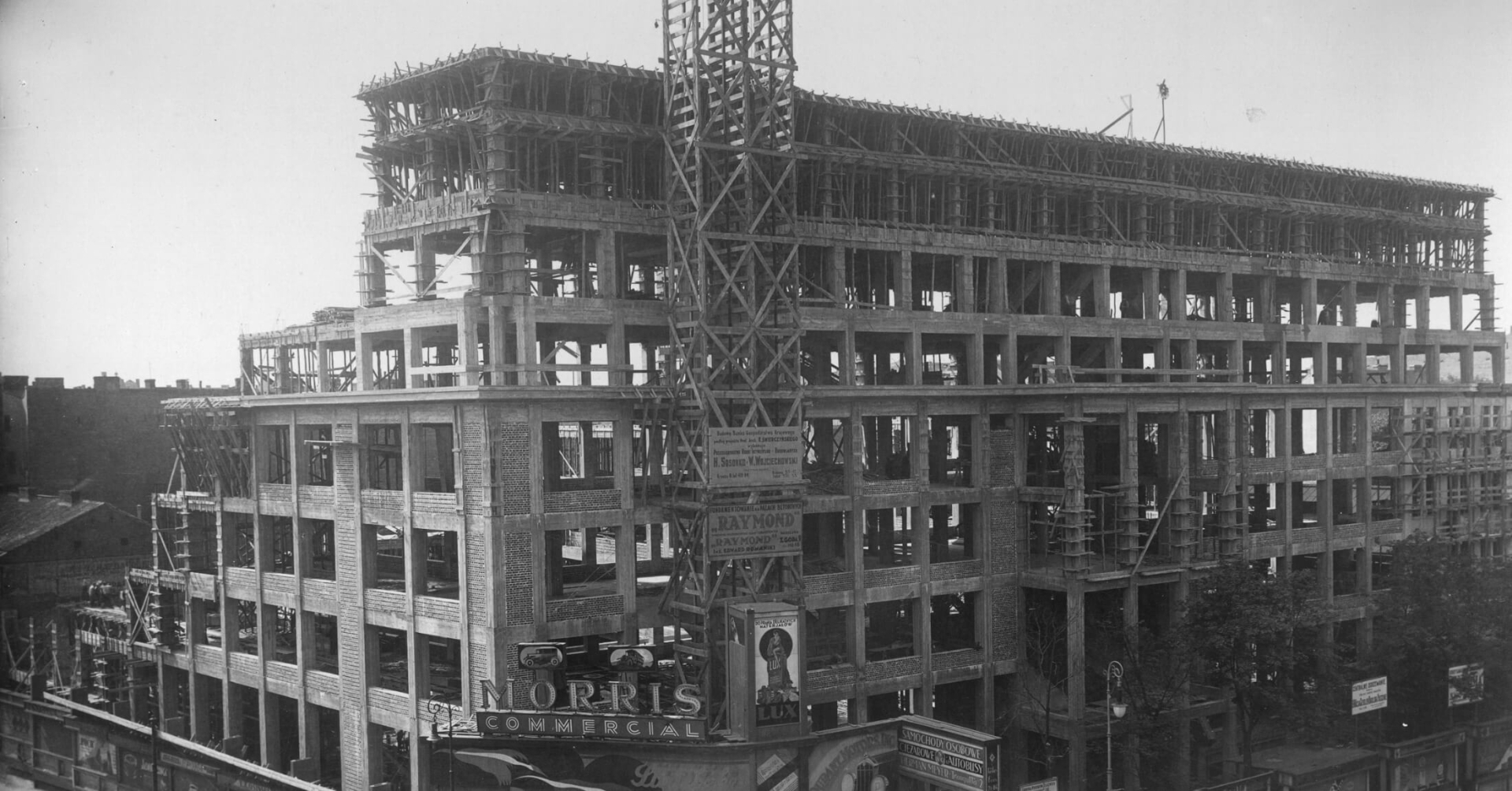
The building at 7 Jerozolimskie Avenue was erected on a steel structure, developed by Ludwik Tylbor. The building was situated on piles to prevent it from settling. In order to meet the requirements and build the edifice on time, the work was carried out in three shifts – during the most intensive period as many as 300 workers performed the work. A vault was built underground, surrounded by a special moat. The facade of the edifice was faced with an unusual stone – Małopolska andesite. The main entrance was accented with avant-corps, that is, a protruding part of the facade towards the street. On it was placed a series of bas-reliefs by Jan Szczepkowski, who was already a renowned sculptor and author of the bas-reliefs on the frieze of the Sejm hall of the Commonwealth of Poland.
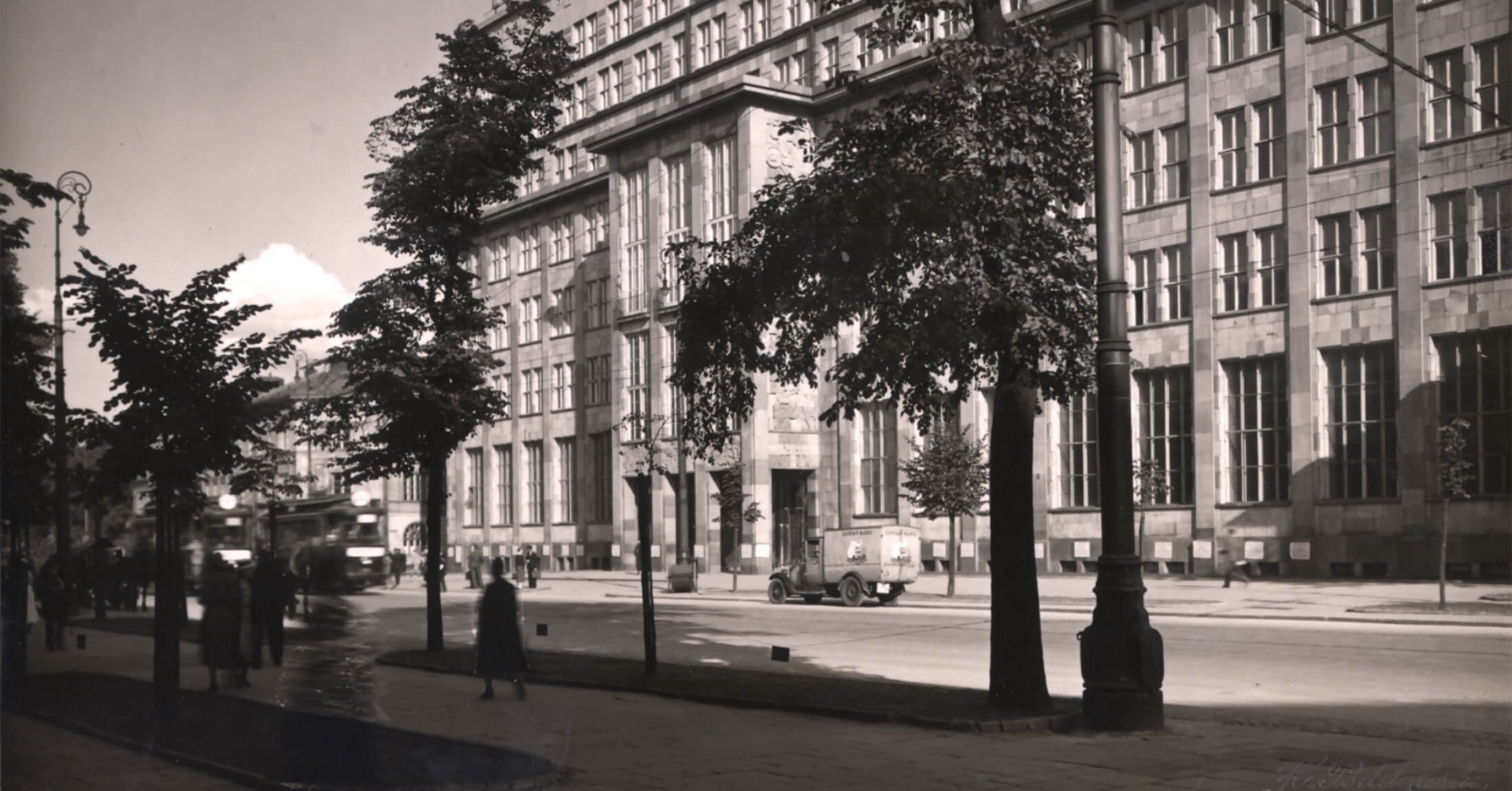
The tastefulness of the building’s interiors could be seen already in the lobby; where visually attractive columns appeared to the eyes of visitors. Made of chrome-nickel sheet metal, they dematerialized in the light of the plafonds. The architect consciously blurred the load-bearing function of these elements, which was no small challenge, as they carried as many as seven floors of the building. The walls were faced with alabaster and marble.
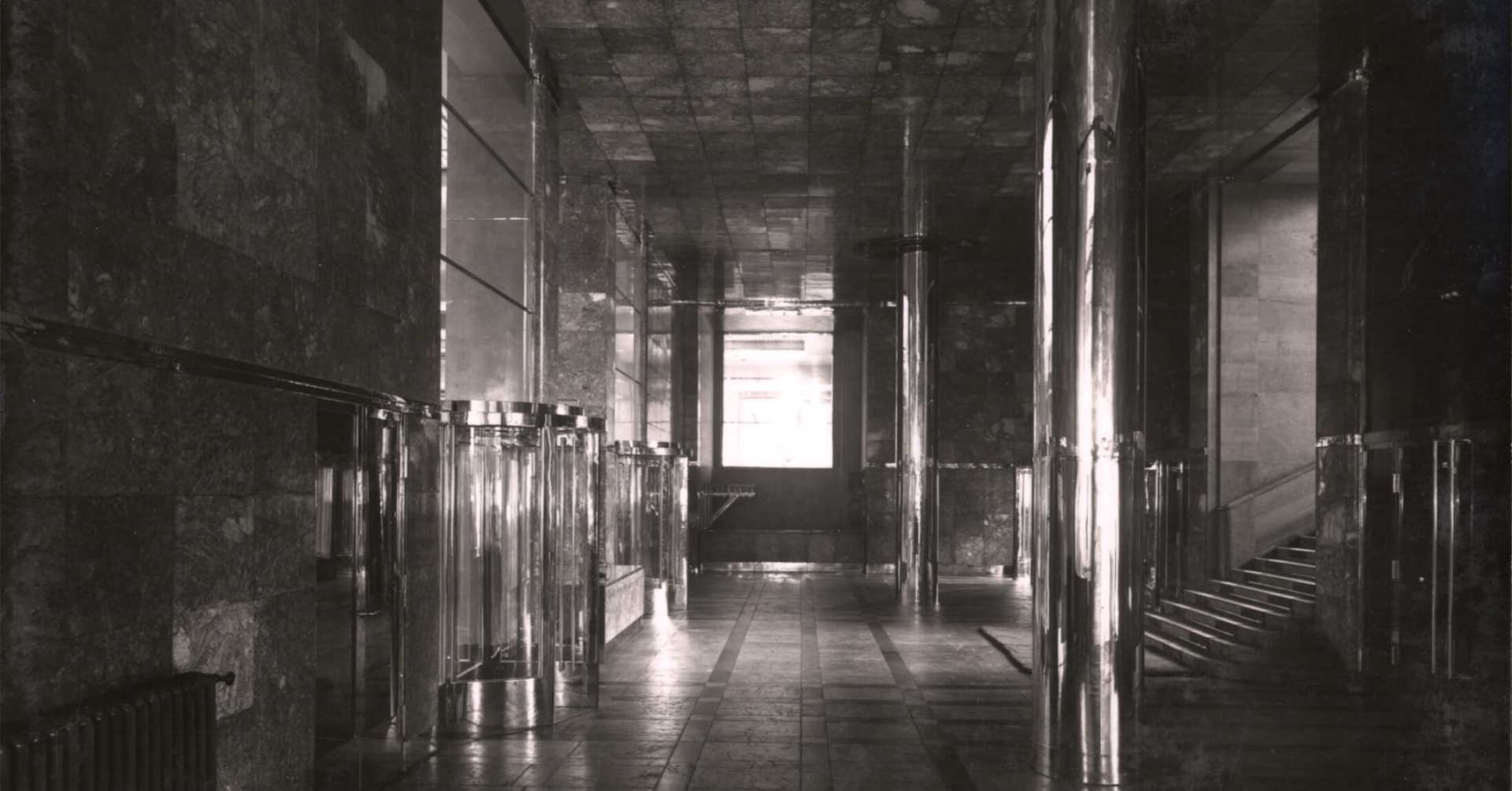
The lightness of the entire space was given by huge panes of mirrors and glass behind which the main operating room was located. Above the latter stretched a glass ceiling, which was designed to let in as much daylight as possible.
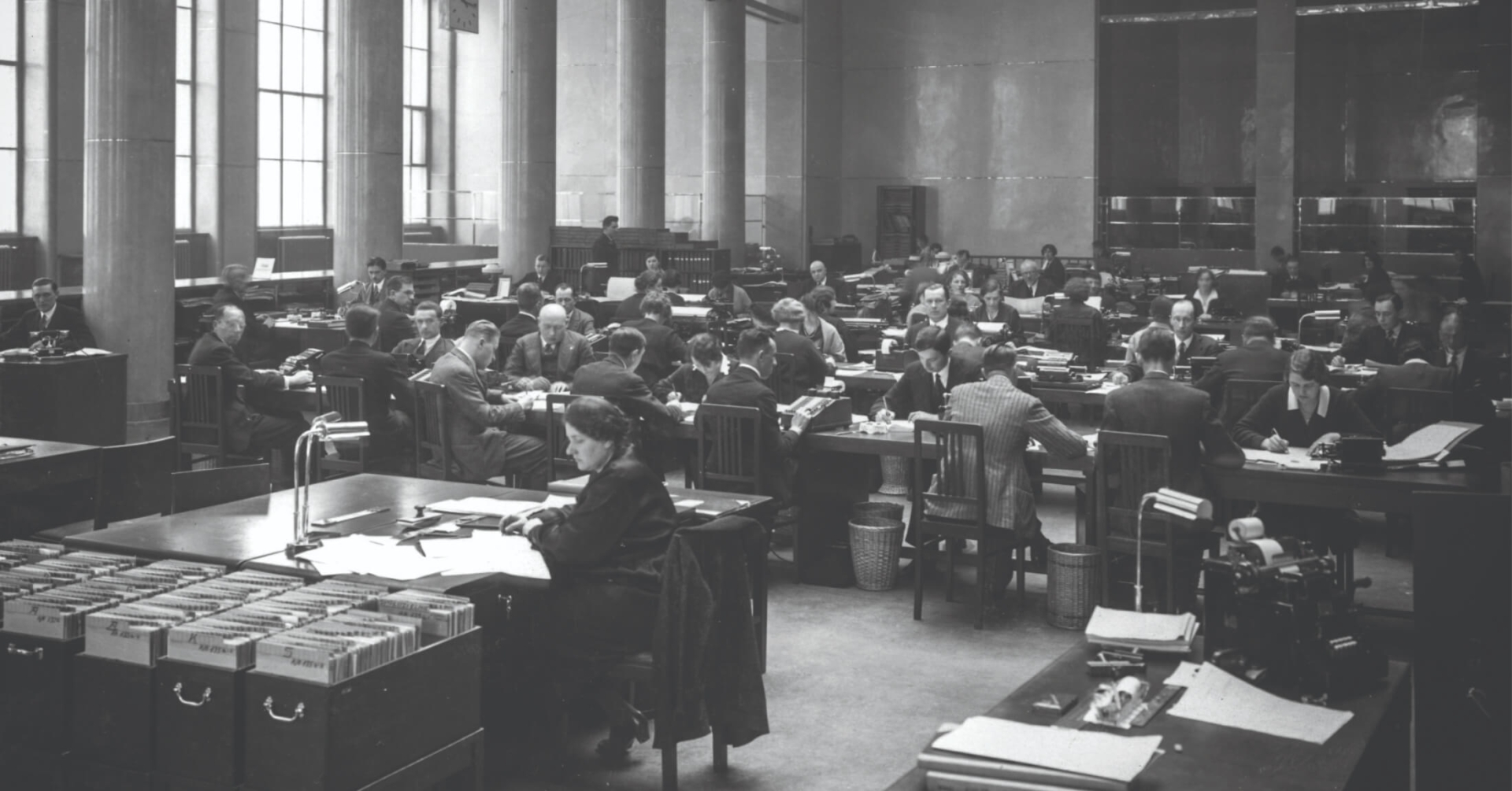

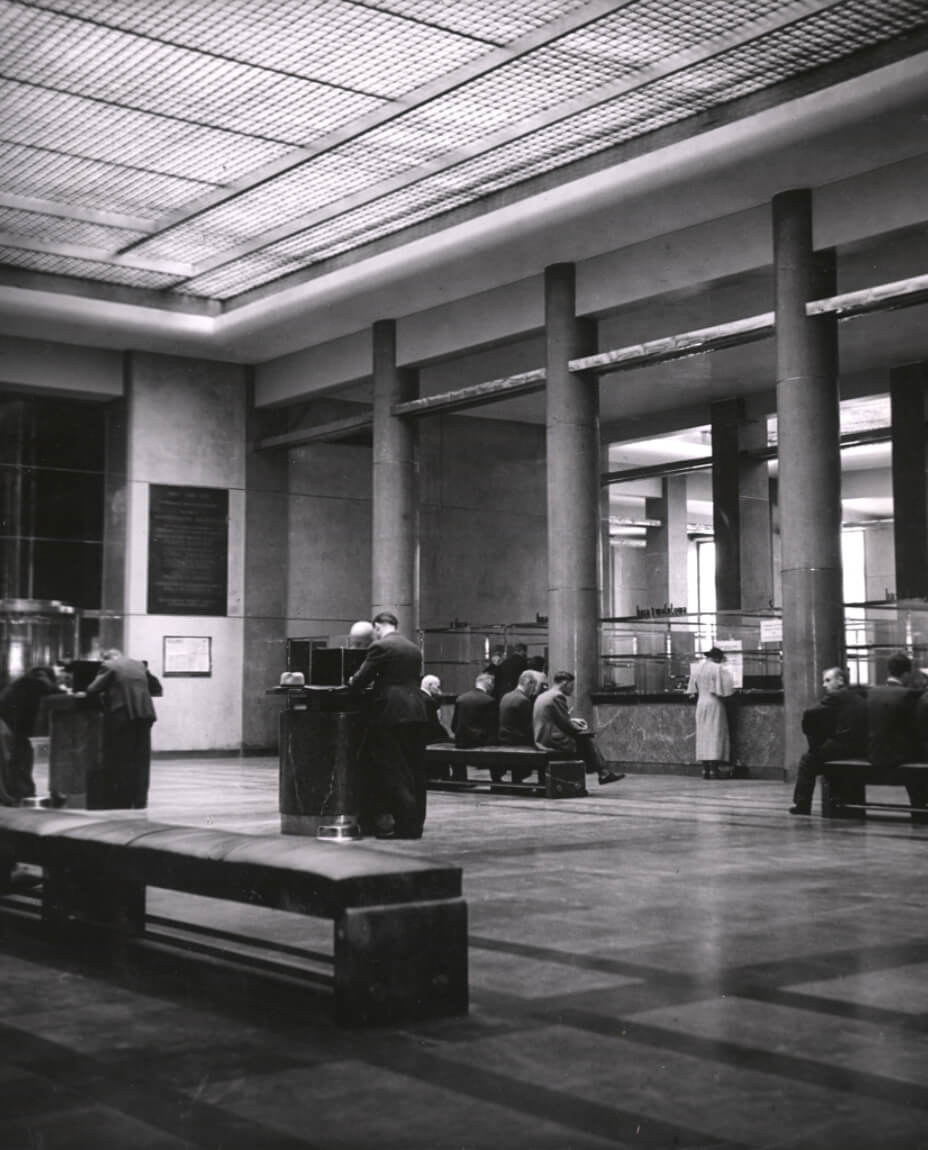
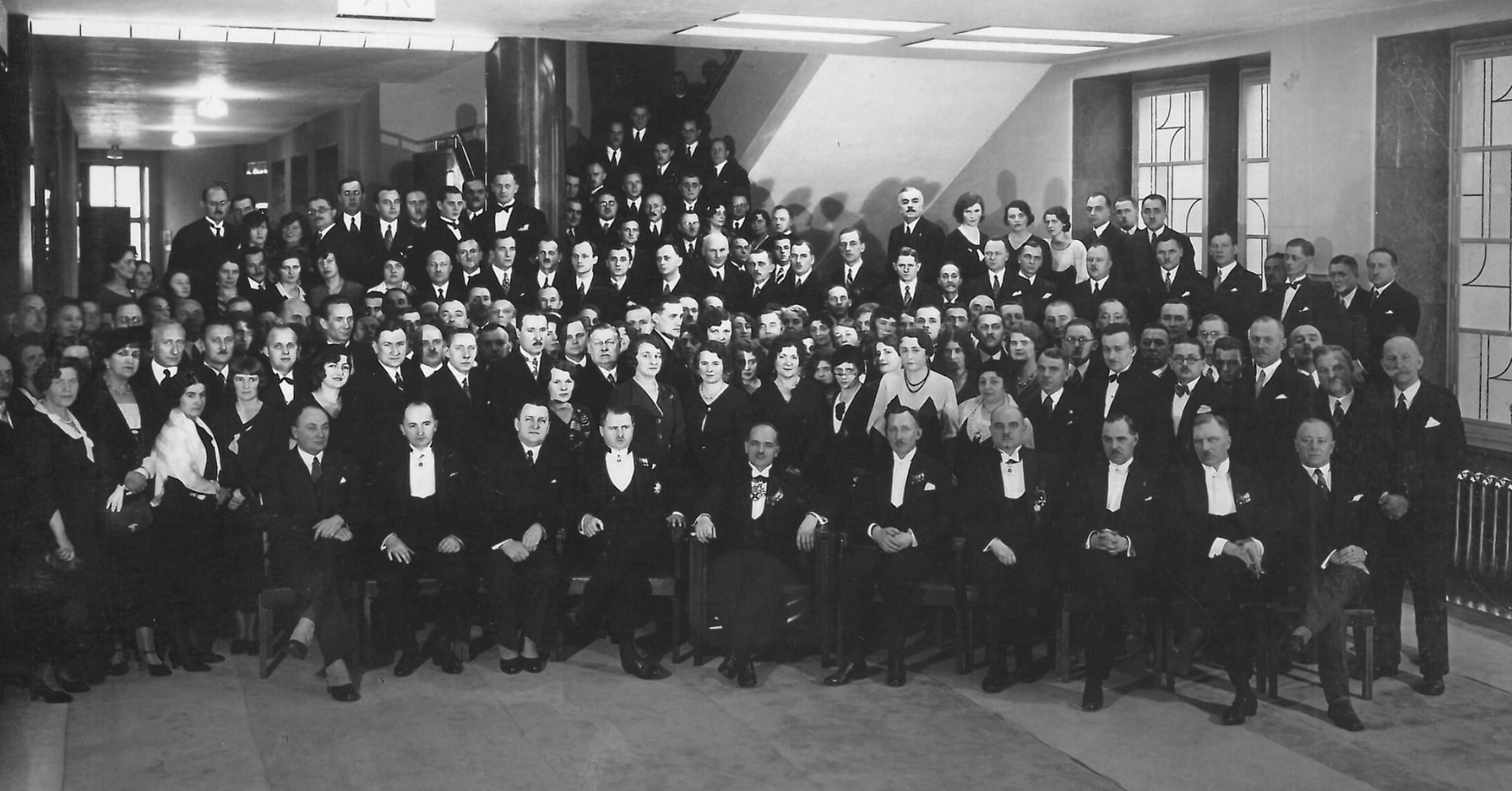
The reinforced concrete structure saved this glass ceiling both in September 1939, when nine half-ton bombs fell on it, and later – when, during the Warsaw Uprising, the building was wanted by soldiers of the “Sokol” battalion with Antek Rozpylacz as a member.
In 1949, the building – as originally intended – was expanded according to a design by Hipolit Rutkowski. Bank Gospodarstwa Krajowego returned to the walls of its original headquarters in 1997.
The building’s interior is currently undergoing modernisation, which will restore it to its former splendour and character from its heyday. The renowned JEMS Architekci studio is responsible for the modernisation project.
